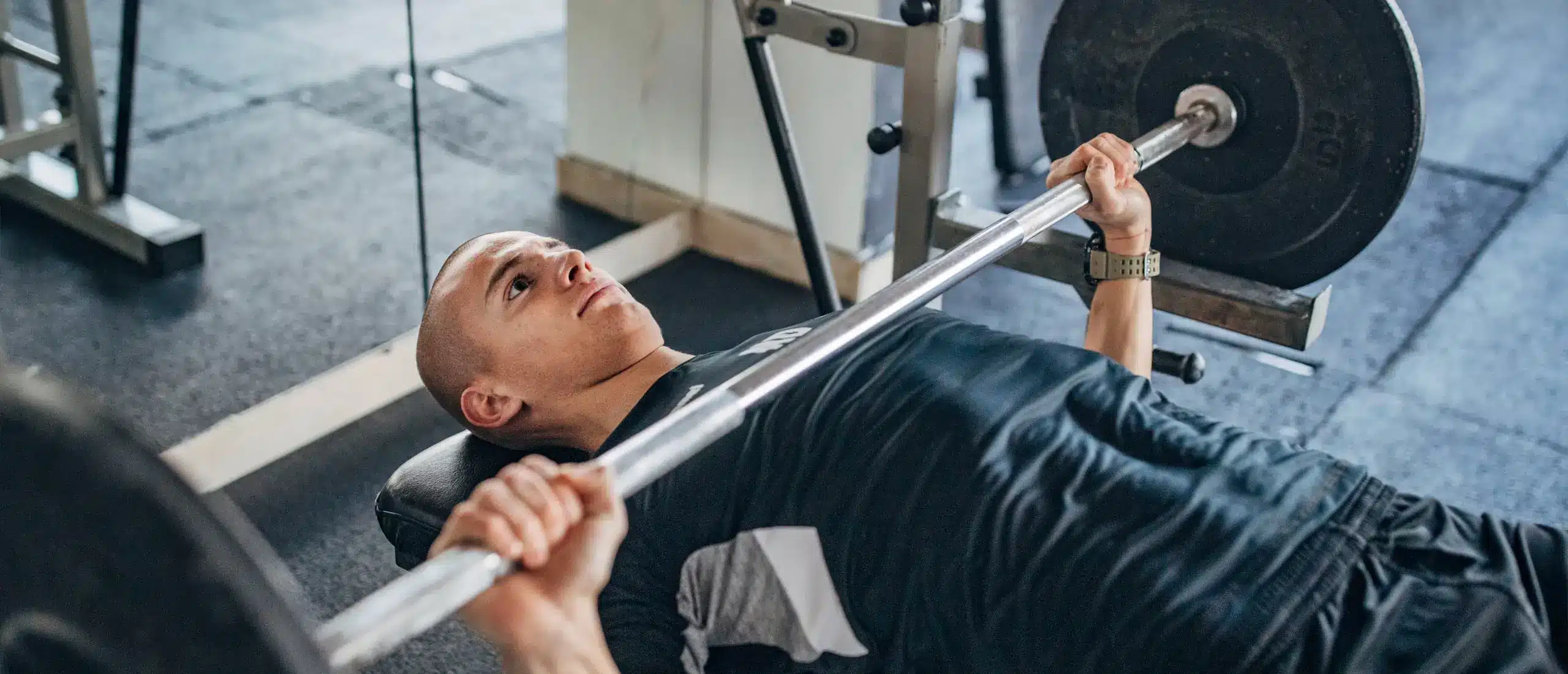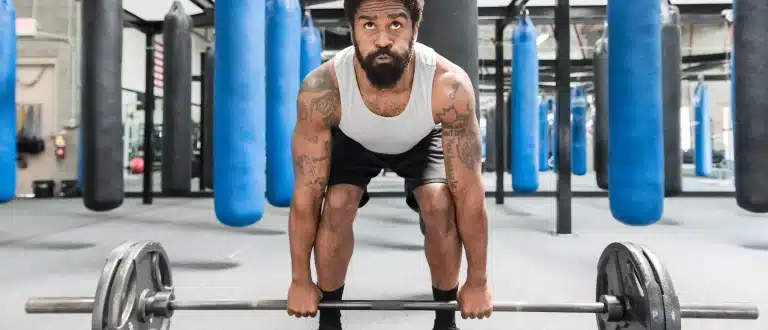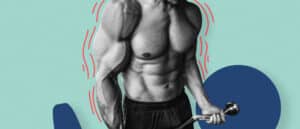Asking For a Friend: Exactly How Much Should You Be Able to Bench?
- By Sydney Bueckert, NASM C.P.T., C.E.S., F.N.S., G.P.T.S.
- Imashi Fernando, MS, RD
- July 24, 2023
Some iteration of ‘How much do you bench, bro?’ is one of the most common questions circulating gym culture. Most guys wear their upper body strength proudly like a badge—eager to outmuscle their bench neighbor (we’ve yet to meet an exercise more susceptible to ego lifting).
This means your bench press max is one of the biggest gym brags and, as it turns out, for reasons beyond vanity. A study published by the American Council of Exercise suggests the barbell bench press has the highest muscle recruitment in the chest muscles (pectoralis major and minor) when compared to other chest exercises (1). How much you can bench speaks volumes about your upper body pushing strength.
So, how much should you be able to bench? And are the numbers you’re putting up good enough? Let’s dig in.
How Much Should You Be Able to Bench Press?
It depends. How much you can bench press is individual, and varies greatly based on your age, weight, training experience, and goals. Because we’re all built differently and have different fitness goals it can be tough (and often pointless) to compare average bench press numbers as if it were apples to apples.
To level the playing field, strength training professionals use a mass-to-weight ratio—which basically accounts for an athlete’s ability to accelerate his or her body. This is important because when comparing those of the same body mass, the strongest one has a decided advantage.
A benchmark for many lifters is hitting their 1:1 mass-to-weight ratio—basically, if you weigh 185 pounds, you can lift 185 pounds—for major lifts like squats, deadlifts, and bench press. The idea is if you can lift your body weight, you should have the functional ability to move and control your body well in space.
If you’re simply looking to build the strength and fitness to live a healthy, functional life, a 1:1 ratio for bench press is a great place to start. But many elite athletes aim for two times their body weight and more.
Know that most beginners will start well below their body weight for bench press, and that’s totally fine. It takes time to build strength. Know your lane, learn your baseline, and enjoy the ride as you gradually work towards a new strength goal.
Should You Be Able to Bench Press 225 Pounds?
Nope. Don’t listen to Reddit. Fitness culture has a weird fetish with two plates stacked on each side of the bar—an arbitrary feat hardened into a significant metric due to its persistent, if unhelpful use to sort players in the NFL combine. While it is indeed impressive to bench 225 pounds; for many, that amount of weight is out of reach. As mentioned above, strength is relative. However, if it just so happens to stack up as the perfect goal for your current mass-to-weight ratio, then hey, go for it.
How to Bench More
Prioritize proper form
It doesn’t matter how much you can bench if your form is—excuse my french—shit. Doing bench press wrong can lead to injury which will stop results in their tracks. Instead of flaring out the elbows which can increase the strain on your shoulders, focus on tucking the elbows in about 45 degrees. Short reps will yield minimal muscle gains. Emphasize fully lowering the bar to get a stretch in your chest, and extend your arms directly above your shoulders to finish.
Lift often
If you don’t already have one, adopt a regular strength training routine. To build strength, aim to get at least two weightlifting sessions on all major muscle groups per week (2). Focus on lifting heavy (85 percent or more of your 1-rep max), and aim to hit at least three to five sets of two to six reps per session.
While it may be tempting to go all in on bench press, focus on a well-rounded approach—like a bro split or PPL split—that incorporates a variety of exercises to help you build global strength. By mixing it up you’ll reduce your risk of imbalances and injuries, and you’ll become stronger overall—which has direct effects on your bench press gains.
Try incline bench presses, pushups, flies, cable crossovers, and landmine presses to target your chest from different angles. For a serious chest pump, look no further than Don Saladino’s cable fly superset.
Eat
To build your muscles, you have to feed them. Both carbs and protein are particularly important after a workout because carbs replenish muscle glycogen (stored energy that’s depleted during a workout), and protein is used for repairing and rebuilding muscle (which is damaged after heavy lifting and high-intensity efforts). Aim to get at least .73 to 1 gram of protein per pound of body weight to maximize muscle size and strength (3).
Keep challenging yourself
Like Rome, your pecs won’t be built in a day. It’s normal for beginners to see massive gains pretty quickly. But after the first few training cycles, that progress typically slows down. Keep pushing yourself. If you do, you’ll see a gradual uptick in your strength level over time.
References
1. Schanke, W. et al (2012). Top 3 Most Effective Chest Exercises. https://acewebcontent.azureedge.net/certifiednews/images/article/pdfs/ACE_BestChestExercises.pdf
2. Schoenfeld, B. et al (2016). Effects of Resistance Training Frequency of Measures of Muscle Hypertrophy: A Systematic Review and Meta-Analysis. https://pubmed.ncbi.nlm.nih.gov/27102172/
3. Schoenfeld, B. et al (2019). How Much Protein Can the Body Use in a Single Meal for Muscle-Building? Implications for Daily Protein Distribution. https://www.ncbi.nlm.nih.gov/pmc/articles/PMC5828430/














